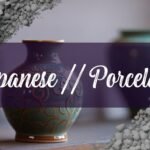The Japanese tea ceremony, or chanoyu, is more than just drinking tea; it’s a ritual steeped in history, philosophy, and profound respect for the tools involved. The evolution of tea wares mirrors the shifting aesthetics and cultural values of Japan over centuries. Initially, during the Muromachi period (1336–1573), Chinese ceramics, especially tenmoku bowls from the Jian kilns, were highly prized, symbolizing sophistication in the early tea rituals.
However, the 16th century brought a shift with tea master Sen no Rikyū, who championed the wabi-sabi aesthetic, emphasizing simplicity and natural beauty. This led to the rise of locally produced, rustic ceramics over ornate Chinese imports. Rikyū’s collaboration with potter Chōjirō resulted in Raku ware, known for its hand-molded, unglazed, often asymmetrical tea bowls that perfectly embodied wabi-sabi principles.
As the tea ceremony evolved, so did the demand for diverse tea wares, spurring the growth of regional pottery styles. Shigaraki and Bizen wares, originating from some of Japan’s oldest kilns, gained prominence for their natural textures and earthy tones. Meanwhile, in the Mino region, Oribe ware emerged with vibrant green glazes and innovative shapes, while Shino ware became known for its milky white glazes and simple, spontaneous designs. Special tea utensils, known as meibutsu, acquired historical significance and craftsmanship, becoming prized possessions of influential figures during the Warring States period (1467–1615). You can learn more about specific glaze types such as Shino glazes here.
Central to the tea ceremony is the chawan (茶碗), the tea bowl itself, which comes in various types, each distinguished by origin, shape, material, and intended use. There are three main classifications: Karamono (Chinese origin), Kōraimono (Korean origin), and Wamono (Japanese origin). Karamono includes styles like Tenmoku, Seiji (celadon), Hakuji (white porcelain), and Sometsuki (blue and white porcelain). Kōraimono features Ido, Mishima, and Kohiki bowls, each with unique rustic characteristics. Wamono encompasses Raku, Hagi, Karatsu, Shino, and Oribe wares, reflecting distinct Japanese aesthetics. Raku ware, with its hand-molded construction and low-temperature firing, results in unique glaze effects and an embrace of imperfection, truly embodying the wabi-sabi spirit. Find out more about the cultural significance in our article Pottery: A Cultural Identity Preserved.
Even the repair of tea wares is an art form in itself. Kintsugi, or “golden joinery,” repairs broken ceramics using lacquer mixed with precious metals, highlighting fractures as part of the object’s history. Techniques like the Crack Method, Piece Method, and Joint-Call Method not only restore functionality but celebrate imperfection. Proper etiquette in handling tea ceremony pottery is paramount, involving receiving the tea bowl with both hands, rotating it before drinking, and admiring the utensils after use.
Today, while traditional tea ceremonies may be less common, there’s a movement to adapt the practice to modern lifestyles. Innovators are creating new tea blends and utensils that honor traditional aesthetics while appealing to current tastes, ensuring the enduring relevance of the tea ceremony. The history of Japanese tea ceremony wares remains a testament to the dynamic interplay between cultural values and artistic expression, influencing modern tea practices and continuing to captivate enthusiasts worldwide.




